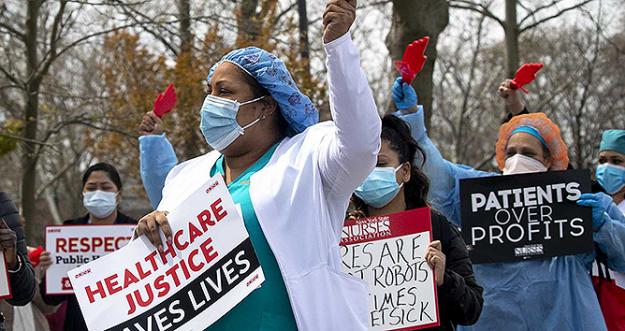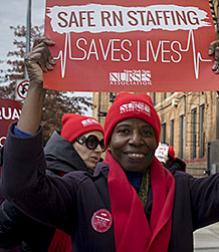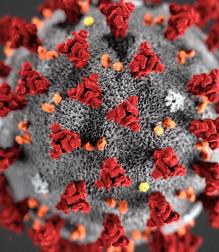
NOTE: This article appears in the May, 2020 issue of NY Nurse.
As I write this column, this nation is confronting a racial crisis of historic proportions. We have all seen the footage — more than eight horrifying minutes of it: a white police officer’s knee on the neck of a dying African American man. There is no question in any of our minds that Police Officer Chauvin killed George Floyd in a brutal, inhuman act. Add to that, the recent killings of Ahmaud Arbery, Breonna Taylor, Tony McDade and others — all heart-breaking and terrifying reminders of the pervasive racial injustice with which we live.
What we are witnessing is the most recent manifestation of the ongoing oppression that pre-dates the founding of this country. We see it today in the repeated tragedy of police brutality. We see it in the disproportionate sentencing and incarceration of minorities. Blacks are incarcerated at five times the rate of whites. They are 12% of the U.S. population but 33% of the U.S. prison population.
Accountability for inequity
We see it in federal, state and local policies that create harmful disparities between the more affluent white communities and communities of color. We see it in the way our resources are allocated — plenty of government money for policing and to build prisons, while budgets for healthcare, education and other supportive services are slashed. Two and one-half billion dollars cut from Medicaid in New York so far this year.
We see it in our paychecks. Black Americans earn less than whites at every comparable education level, and black Americans accumulate less wealth over time. The typical black household has one-tenth the wealth of a typical white household, according to Federal Reserve data.
It is incumbent on all of us to ask: where does accountability for this inequity lie?
Add to that, the treacherous COVID-19 crisis. For New York’s working families, especially for those in communities of color, the hardships caused by the virus have been particularly severe and enduring.
While most of New York’s workforce went “on pause”, many people of color — overrepresented among healthcare aides, grocery store clerks, emergency dispatchers and public transportation employees — overwhelmingly went to work. Nationally, black workers make up 17% of front-line workers.
Another COVID surge
In New York City, the virus’ epicenter, the effects of COVID-19 could be measured by zip code with low wage workers, immigrants and people of color having higher rates of exposure, infection, hospitalization, and mortality than higher income and white populations.
For African Americans in New York City, the economic hardships of the COVID crisis have been especially difficult to weather, and mortality rates from the virus are twice that of whites. According to the New York Times, “Black Americans… have far fewer resources available to ride it out, given that they earn less money and have had less ability to build wealth. And they are dying at higher rates from the virus than whites.”
With another COVID surge anticipated, the shock waves of virus and unemployment and dislocation and hardship keep coming, with urban communities of color in its direct path. Rural communities upstate are also bracing for the coronavirus, as scientists predict an outbreak in these communities this summer.
As nurses, we know first-hand that these inequalities manifest themselves in many ways in the safety net hospitals, which provide more care to communities of color and the poor. There is less access to resources for both staff and patients, and ongoing lack of funding to maintain operations during a crisis, yet wealthier hospital systems continue to receive the lion’s share of financial aid from the government. All things we have seen these last three months and are fighting to correct.
The safety net hospitals in New York have higher numbers of healthcare workers who are themselves people of color and more vulnerable to the pandemic.
“Our nation’s African American community is going through an extremely painful experience, pain that has been inflicted upon this community repeatedly throughout history and is magnified by mass media and repeated deaths,” said Dan Gillison, CEO, National Alliance on Mental Health. “Racism is a public health crisis.” A health crisis we have not begun to meaningfully address.
We must all stand up
Our union has been to the frontlines of COVID-19, and we will bring that energy and perseverance to the fight for policing and criminal justice reform; we will put it into immediate action in calling for revenue and resources to improve education, create good jobs, rebuild small businesses and more; and we will continue to raise our voices against Medicaid cuts and for a more just and equitable healthcare system. Continuing the status quo is denial and, by extension, the acceptance of racism. We must all stand up for these basic human rights and do our part to heal the deep scars of inequality.
— NYSNA Executive Director Pat Kane, RN




